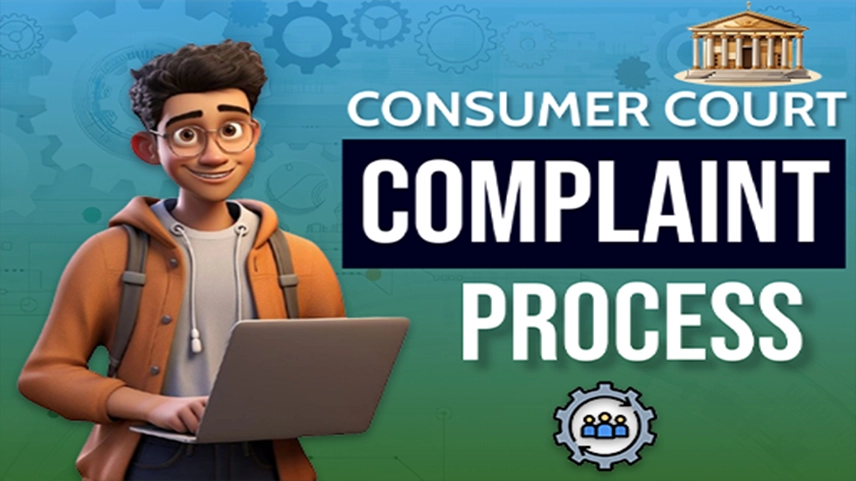
Consumer Court Complaint Process: Step-by-Step Guide

When a consumer is subjected to unfair trade practices, faulty goods, or bad services, they have a right to seek remedy against such action by utilizing the Consumer Court system in India. The Consumer Protection Act, 2019, entitles consumers to protect their rights and redress any grievance created by sellers or service providers. Here is a simple guide to explain who can file a complaint and how the consumer court complaint process works.
Who Can Make a Complaint in Consumer Court?
The Consumer Protection Act, 2019, allows various people and entities to make a complaint. This includes:
- Individual consumers who acquire goods or services for personal use and not for resale
- Multiple consumers who have similar complaint interests
- Consumer associations, either registered or voluntary
- The central and state government if a complaint otherwise affects the public interest
- Legal heirs or representatives if the consumer deceases
- Parents or guardians if the consumer is a minor
This makes room for consumer justice for everyone.
The Consumer Court System in India
Consumer complaints are resolved in a three-tier quasi-judicial system:
District Consumer Disputes Redressal Commission (DCDRC):
- The DCDRC deals with complaints in which the amount of the claim is up to ₹1 crore.
State Consumer Disputes Redressal Commission (SCDRC):
- SCDRC deals with cases filed for claims over ₹1 crore and up to ₹10 crore.
- National Consumer Disputes Redressal Commission (NCDRC):
- The NCDRC deals with cases filed with claims of more than ₹10 crore.
The three levels of courts allow for consumer complaints to be heard and decided more efficiently based on the value and complexity of the case.
How to File a Complaint in Consumer Court?
1. Attempt for an Amicable Settlement
Before making a formal complaint, the consumer should attempt to resolve the issue directly through the seller or service provider. A consumer should send a written notice together with the seller/service provider. The seller or service provider can be given 15-30 days to reply to or resolve the complaint.
2. Prepare a Consumer Complaint
If no resolution is reached, the next step is to draft a formal complaint. The complaint must include:
- Name, address, and contact details of complainant and opposite party.
- Facts of the matter, including the date of purchase, details on the product/service, and the issue.
- Documentation, including invoices, warranty cards, emails, etc.
- What you seek (refund, replacement, compensation).
- The signature of the complainant.
Hiring a lawyer is optional but can be helpful in complex cases.
3. Determine the Correct Jurisdiction
You must decide what your monetary claim is and the location of the opposite party and/or the location where your cause of action arose and then file your complaint with the correct commission (district, state, or national).
4. Pay the Prescribed Fees
To file a complaint is to submit a nominal fee. You can pay by way of demand draft, postal order, or pay it online on the E-Daakhil portal.
5. Submit the Complaint
Finally, submit your complaint in one of the following ways:
- In person at the commission office.
- By registered post.
- Online through the E-Daakhil portal, which is the easiest and fastest way of doing it.
Conclusion
The Consumer Protection Act, 2019, gives every consumer a right to voice against any shopkeeper or service provider regarding unfair practices. With these steps, the consumer can easily file his/her complaint and demand justice without undue legal complexity. Whether it is a defective product, poor service, or misleading advertisements, consumer courts ensure fair treatment for all consumers.
